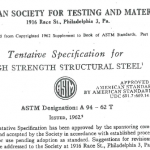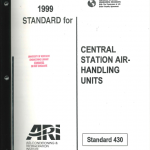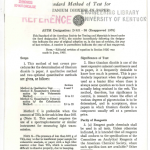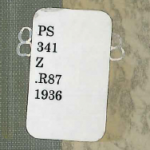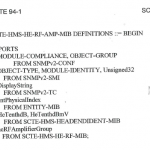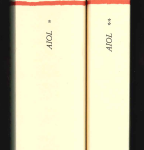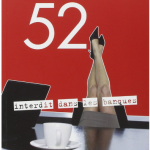Tentative specification for high strength structural steel / American Society for Testing and Materials. (OCLC #954341371)
RDA 2.3.6 on Variant Titles lists a number of cases where you might include this element in your record, including:
f) part of a title (e.g., an alternative title or a section title recorded as part of the title proper)
When a portion of the title is in a different font, and could possibly be considered the title, I include that part as a title added entry:
246 30 ǂa High strength structural steel
Second indicator 0 is for title added entries that are a portion of the title.
